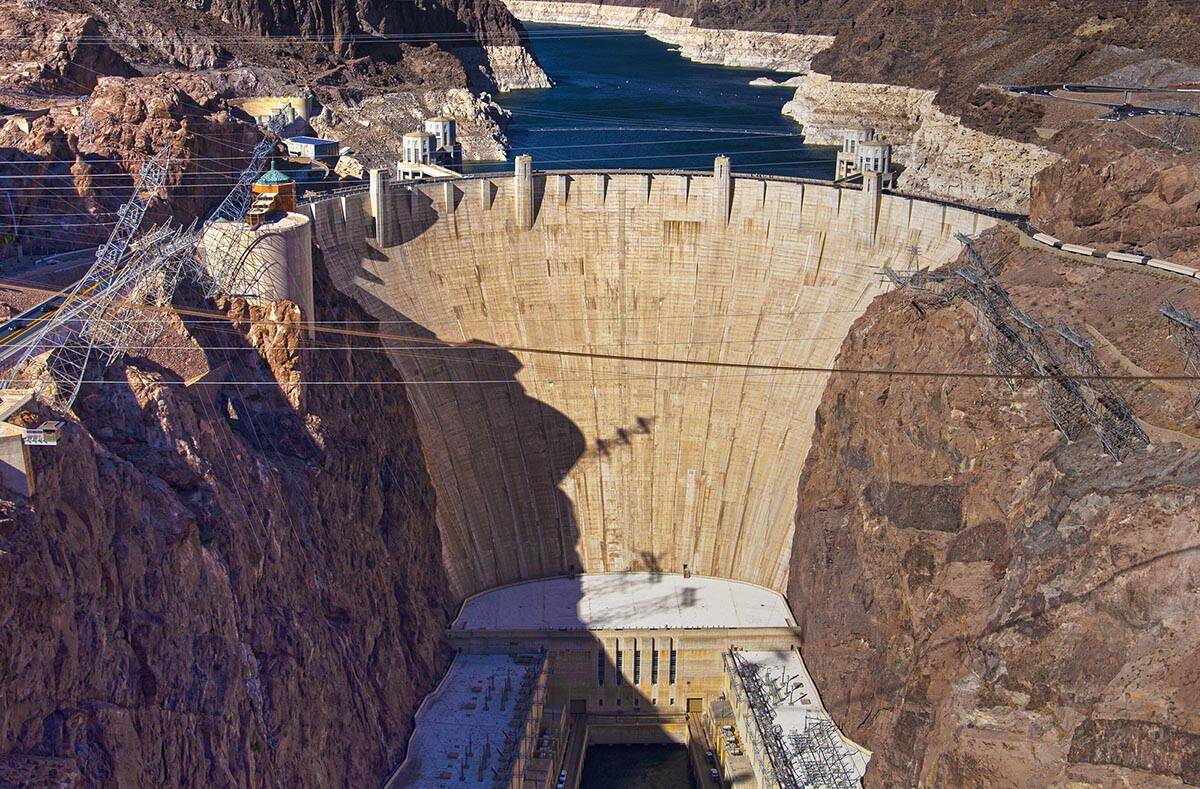Alaska
Alaska Judge’s Sex Scandal Brings Scrutiny to US Attorney Tucker

The sexual misconduct findings that toppled a federal judge in Alaska will prompt fresh scrutiny of the Biden-appointed US attorney there, according to two of her predecessors in the post and lawyers experienced in similar inquiries.
S. Lane Tucker, the Anchorage-based US attorney since 2022, wasn’t mentioned by name in a judicial panel’s July report that concluded Judge Joshua Kindred had inappropriately sexualized relationships with two Alaska prosecutors, forcing him to resign.
But defense lawyers are preparing to challenge dozens of cases involving Kindred and those prosecutors. Tucker also faces separate complaints to investigative agencies that raise questions about how the office leadership responded to the allegations.
In one, to the independent US Office of Special Counsel, Kindred’s former law clerk claims Tucker and other top managers retaliated against her after she reported the judge’s behavior to them. In the other, public defenders asked the Justice Department’s inspector general to investigate alleged ethical breaches at the prosecutors’ office.
The IG has referred that complaint to Justice’s Office of Professional Responsibility, which reviews attorney misconduct allegations, according to an Aug. 2 letter obtained by Bloomberg Law.
Robert Bundy and Karen Loeffler, Alaska’s US attorneys during the last two Democratic administrations, expect OPR to probe the office, which they said would inevitably include an examination of what Tucker knew, when she knew it, and how she responded.
“It goes to what the US attorney was doing to ensure that her office was following the appropriate rules of professional responsibility and the obligations in the Justice Manual,” Bundy said.
Spokespersons from both investigative agencies declined to comment or acknowledge their inquiries.
A spokeswoman for the Alaska US attorney’s office declined a request to interview Tucker and declined to comment in response to a detailed list of questions.
Xochitl Hinojosa, the Justice Department’s chief spokesperson, also declined to comment for this story.
Kindred’s resignation capped an 18-month inquiry in which the Ninth Circuit judicial panel found he created a hostile work environment, sexually harassed his clerk, and received nude photos from a senior Alaska federal prosecutor.
Both the US attorney’s office and federal public defenders launched internal reviews after he stepped down to identify cases where the judge or the prosecutors failed to disclose or act on obvious conflicts. Prosecutors disclosed at least 43 cases so far, and defense lawyers, poring over past cases, say they’re preparing to seek relief in many more.
That raises the prospect that leadership in the US attorney’s office missed or ignored red flags and now could be forced to reopen dozens of closed cases.
“There obviously was nobody steering the ship,” said Rich Curtner, the longtime former chief federal defender in Alaska, who retired in 2020.
‘Prompt Response’
In a staff-wide July 12 email obtained by Bloomberg Law, Tucker touted her office’s “prompt response” after the former law clerk, whom she had hired as a line prosecutor, first reported in fall 2022 that Kindred had sexually harassed her.
Tucker and her top deputy, Kathryn Vogel, quickly referred the allegations—including the claim about the other prosecutor’s nude photos—to the Ninth Circuit and OPR, according to internal administrative proceeding records viewed by Bloomberg Law.
The office has never publicly said it undertook its own internal review after learning of Kindred’s claim that the senior prosecutor, Karen Vandergaw, sent him nude photos. Tucker later promoted Vandergaw to an advisory role in September 2023.
The judicial panel substantiated that Vandergaw sent the photos and had a “flirtatious rapport” with Kindred in its July report. She was effectively demoted shortly after the report’s publication.
Tucker also initially declined to approve the former clerk’s request to be reassigned out of the district, according to the clerk’s whistleblower complaint with OSC. In a separate filing in the internal administrative proceeding, Tucker said that she viewed the former law clerk as spreading gossip by discussing the nude photos allegedly sent to the judge.
Three legal ethics professors told Bloomberg Law that such a serious allegation should’ve compelled Tucker to initiate her own review within her office, while waiting for OPR to complete its process.
“This is not a situation in which the US attorney should be taking a hands-off attitude,” said John Strait, a professor emeritus at Seattle University School of Law who has run ethics training for the Alaska US attorney’s office.
Of particular concern, given the potential conflicts of interest, was Tucker’s decision to elevate Vandergaw into a role with oversight of more cases during the pendency of the Ninth Circuit probe.
In response to a convicted cyberstalker’s motion for a new trial due to Kindred’s failure to recuse, prosecutors Sept. 3 argued the guilty verdict must stand because Vandergaw “played only a minor advisory role.”
Bloomberg Law’s analysis of the 43 potentially conflicted Kindred matters flagged by the US attorney’s office shows Vandergaw was involved in nearly three dozen of them. Neither Kindred nor Vandergaw have commented publicly since the judicial panel released its findings.
Loeffler, the US attorney in Alaska from 2009 to 2017, said the public attention on Kindred’s misconduct should have turned the ethics problems into a “a nonstop daily issue” for that office’s leadership. “You have to be there every day dealing with the fallout,” she said.
Tucker waited nearly a month after Kindred’s resignation to call an in-person, all-staff meeting to discuss it, said current and former staffers who requested anonymity to discuss internal operations.
A detached leadership style and out-of-state absences have become hallmarks of her two-year tenure, according to interviews with nine current and former employees of the office and three lawyers and law enforcement officials who have business there.
Tucker left Alaska for roughly a third of weekdays in her first year on the job, according to an analysis of travel documents obtained by Bloomberg Law.
“That’s just unheard of,” Loeffler said.
On July 12, four days after the public release of the judicial report about Kindred, Tucker sent a staff-wide email. “It is important for you all to know how proud I am of the ethical compass of our office and the work we do on behalf of our community,” she wrote.
Nine days later, Tucker left the state to attend the Ninth Circuit’s judicial conference in Sacramento. She had initially scheduled to spend an extra eight days of personal time in Palm Springs after the conference, the documents show. It’s unclear if she kept those plans.
Warning Letter
Tucker grew up in Sarasota, Florida, and graduated from law school at the University of Utah. She moved to Alaska in 2002 after working as a government attorney in Washington. She served as an assistant US attorney and then civil chief in the office before moving to private practice at two prominent law firms in Alaska—Perkins Coie and Stoel Rives.
Both firms declined to comment for this article.
Cecy Graf, the former chief financial officer at Stoel Rives, said Tucker was a “force to be reckoned with” and was considered whenever there was a “major decision to be made.”
When she was under consideration for the US attorney’s job, two former prosecutors in the office shared a letter they’d drafted for the Biden transition team with Tucker. The letter urged Alaska’s next top federal prosecutor to prioritize addressing what they characterized as the office’s pattern of discrimination complaints from women attorneys.
They also highlighted a November 2020 decision from DOJ’s internal complaint adjudication office, reviewed by Bloomberg Law, which found “there is evidence that a discriminatory and retaliatory culture existed within the” Alaska US attorney’s office.
One of the letter’s authors, former Alaska federal prosecutor Kimberly Sayers-Fay, said Tucker never responded to her message.
Tucker was confirmed by the Senate in May 2022 to lead the office, a staff of around 50 to 60 tucked inside a tight-knit legal community. Her resume lists 15 years of Justice Department experience—all as a civil attorney, without referencing criminal cases. She discussed her inexperience in criminal law openly with staff after taking over as US attorney, employees said.
Faced with multiple veteran departures, Tucker turned to James Klugman, who had four years of federal prosecution experience, to helm the criminal division at the start of 2023.
Tucker delegated wide-ranging authority to him, while rarely attending criminal meetings herself, said multiple people with direct knowledge of the office’s operations. Klugman was reassigned back to regular line attorney around a year later.
“It sounds like a perfect storm,” said Mark Yancey, a former US attorney who later ran DOJ’s national training academy for prosecutors. “You really need strong leadership in your criminal division.”
Yancey added that his former division, DOJ’s Executive Office for United States Attorneys, could also look into leadership’s response to the Kindred scandal.
Judicial Application
Tucker has already set her sights on her next career move: one of the district’s open judgeships.
In a 2023 letter to Sen. Lisa Murkowski (R-Alaska) expressing interest in the vacancy, Tucker wrote: “I have developed a balanced perspective that allows me to recognize the validity of disparate viewpoints and arguments, treat all with dignity and respect, and resolve problems with fairness and efficiency.”
The Alaska Bar Association rated Tucker as one of the four most qualified applicants for the judgeship.
Murkowski, who had previously praised President Joe Biden’s choice of Tucker for US attorney, declined to say if she also recommended Tucker as a finalist for the previous court vacancy—which is still awaiting a White House nomination.
Both she and the state’s other Republican senator, Dan Sullivan, have called on the Justice Department to investigate the US attorney’s office in light of the scandal.

Alaska
Alaska Airlines planes clip wings at Seattle-Tacoma airport, prompting FAA probe

Fox News senior congressional correspondent Chad Pergram has the latest on aircraft travel issues on ‘The Bottom Line.’
The Federal Aviation Administration (FAA) is investigating after two Alaska Airlines planes clipped wings at a Seattle-Tacoma International Airport gate Saturday.
At about 12:15 p.m. local time, ground-service tugs were pushing back two aircraft from their gates when their winglets touched, an Alaska Airlines spokesperson told FOX Business.

Alaska Airlines flights 1190 and 1094 clipped wings Saturday. (LunatikMedic/Erik Luna / Fox News)
TRUMP CONTINUES TO DEFEND QATAR GIFTING US $400M JET: ‘WE SHOULD HAVE THE MOST IMPRESSIVE PLANE’
There were no injuries, the spokesperson said.
Passengers on the two flights deplaned at the gate, were transferred to other aircraft and departed a short time later.

An Alaska Airlines Boeing 737-900ER aircraft on the tarmac at Seattle-Tacoma International Airport in Seattle. (David Ryder/Bloomberg via Getty Images / Getty Images)
MAJOR AIRLINE MAKES BIG CHANGE TO EASE TRAVEL WOES AMID CHAOS AT NEWARK AIRPORT
“We sincerely apologize to our guests for the delay and inconvenience,” an Alaska Airlines spokesperson said.
| Ticker | Security | Last | Change | Change % |
|---|---|---|---|---|
| ALK | ALASKA AIR GROUP INC. | 53.65 | +0.67 | +1.26% |

The FAA said it is investigating the Alaska Airlines incident. (Kevin Carter/Getty Images / FOXBusiness)
GET FOX BUSINESS ON THE GO BY CLICKING HERE
FAA air traffic control is not responsible for plane movements in the gate area, the agency wrote in a news release.
Alaska
As Alaska warms, Arctic geese are skipping their southern migration

Out on Izembek Lagoon, the water was flat and clear. Alison Williams, a biologist with the U.S. Fish & Wildlife Service, dipped her paddle in and steered her kayak toward the center of the lagoon, where the seagrass below runs thick.
“Everything below us is eelgrass,” she said. “It actually evolved on land and then evolved to go back into the water.”
The lagoon is the heart of the Izembek National Wildlife Refuge, a wide expanse of tundra and small lakes that stretches 310,000 acres across the Alaska peninsula, between the Pacific Ocean and the Bering Sea. It’s the smallest federal wildlife refuge in Alaska but one of the most important. It’s home to hundreds of thousands of birds: Pacific black brant, emperor geese, pintails and eiders.
This time of year, Izembek is famous as a stopover for migrating birds — a place to rest and refuel as hundreds of species move between their southern wintering grounds and the Arctic.
Refuge manager Maria Fossado underscores how central this place is for migration.
“Wildlife are very smart, and they like to capitalize on use of energy,” she said. “Their focus is feeding, resting and capitalizing on when food is available.”
Theo Greenly / KSDP
/
KSDP
As the Arctic warms, some birds, like the Pacific black brant, are cutting their migrations short and spending the winter at the refuge. Williams says declining sea ice has made it easier to find the resources they need.
“It used to be, in the ’80s, a couple thousand. Increasingly, more of them are staying all winter long. Fifty to sixty thousand — the thought is, the lagoon is freezing over less, we’re getting less ice, and so the brant can access the eelgrass,” she said.
The lagoon is Izembek’s crown jewel. It hosts one of the largest eelgrass beds in the world. So why fly 2,800 miles to winter in Mexico when it’s plenty warm here?
“It might freeze up and then melt a couple times during the winter now, which is part of why people think that the brant are staying over more during the winter,” Williams said.
But overwintering has its costs. Brant don’t have to fly as far — but surviving an Alaska winter takes more energy than it does in a warmer place. Williams calls it a game of trade-offs.
A study published in March the journal Movement Ecology looked at brant over a 10-year period. It found the benefits mostly cancel out: the energy saved on the commute is about the same as the energy spent making it through the colder winters.

Theo Greenly / KSDP
/
KSDP
A fragile habitat holds on — for now
Beneath Williams’ kayak, there was a sprawling underwater meadow — the eelgrass beds that fuel the entire ecosystem.
“There’s a lot of things that live in the eelgrass,” Williams added. “It’s good habitat for a huge array of things.”
Tiny snails and clams burrow into it. Fish shelter inside it. And birds like the black brant depend on it for the energy to migrate — or overwinter.
The U.S. Geological Survey surveyed the eelgrass cover at Izembek in 2016 and 2020.
“There was some loss of eelgrass in the central part of the lagoon, where we are now,” Williams said. “And then a couple areas where we actually gained a little bit.”
Overall, the survey found a slight decline — far less than the global average. Worldwide, scientists estimate that about 30% of eelgrass habitat has vanished, hit hard by warming waters, pollution and invasive species.
Izembek remains one of the largest intact strongholds for this vital ecosystem. But in a warming world, even the most remote places are changing.
Alaska
Amid budget struggle, Alaska has little money for new construction or renovation

The Alaska House of Representatives, following in the path of the state Senate, has approved a small construction and renovation budget for the fiscal year that starts July 1.
The vote on Senate Bill 57, the annual infrastructure bill — formally known as the capital budget — was 21-19, along caucus lines.
When oil prices and production are high, the Alaska Legislature pours hundreds of millions of dollars into new construction and maintenance projects. This spring, with the Legislature anticipating low oil prices and reduced federal funding, the House version of the capital budget proposes to spend just $167.9 million in general-purpose dollars.
In comparison, the capital budget two years ago spent more than three-quarters of a billion dollars. The newly approved capital budget isn’t the smallest in recent history — in 2016, legislators approved just $107 million — but spending is very limited by historical standards, noted Rep. Calvin Schrage, I-Anchorage, who oversaw the budget on the House Finance Committee.
“This was not a fun or easy year to be the capital budget co-chair,” Schrage said, “due to our state’s dire fiscal picture. We had to say no — or at least not now — to a lot of good projects that would have benefited Alaskans. That said, we were still able to make some meaningful investments.”
A significant amount of the capital budget is being set aside for matching funds needed to unlock federal grants. For example, it allocates $57.2 million in general-purpose money to the Alaska Department of Transportation and Public Facilities, which gives the state access to more than $2 billion in transportation funding once federal money is considered.
It isn’t yet clear how federal budget cuts will affect that figure. The budget is set based on what is known as of today.
With general-purpose revenue limited, the House and Senate finance committees were mostly limited to assigning money to deferred maintenance projects at state facilities spread across Alaska.
For example, the Senate added $19 million to the major maintenance list at public schools. The House added another $19 million on top of that, enough to cover the top nine projects on the list.
“We basically had an agreement going in; we got half, they got half,” said Sen. Bert Stedman, R-Sitka and Senate Finance Committee co-chair.
When it came to discretionary funding, requests from individual legislators for things like playgrounds or streetlights, the House and Senate were again treated equally.
“Everybody got nothing,” Stedman said.
Budget documents show few exceptions to Stedman’s comment.
One of the few budget additions made by the House was $500,000 for a Blood Bank of Alaska testing lab. Gov. Mike Dunleavy requested the money, the Senate rejected it, but the House added it back in.
In many places, the budget attempted to use other sources of money instead of general-purpose dollars that primarily come from Permanent Fund earnings, oil taxes and royalties.
For example, Dunleavy requested $7 million for a time and attendance system to be used by state employees. The Senate cut that request to $4 million, and instead of using general-purpose dollars, lawmakers took additional money from the accounts of the Alaska Industrial Development and Export Authority. The House approved that change.
Of the budget overall, Schrage said lawmakers tried to deny projects equally, without regard to party or district.
“I know that this won’t make everyone happy, but we’ve done the best that we can,” he said.
The budget will return to the Senate for a concurrence vote, then advance to Dunleavy, who has line-item veto power and may eliminate individual budget items but cannot add new ones.
Originally published by the Alaska Beacon, an independent, nonpartisan news organization that covers Alaska state government.
-

 Austin, TX1 week ago
Austin, TX1 week agoBest Austin Salads – 15 Food Places For Good Greens!
-

 Technology1 week ago
Technology1 week agoNetflix is removing Black Mirror: Bandersnatch
-

 World1 week ago
World1 week agoThe Take: Can India and Pakistan avoid a fourth war over Kashmir?
-

 News1 week ago
News1 week agoReincarnated by A.I., Arizona Man Forgives His Killer at Sentencing
-

 News1 week ago
News1 week agoWho is the new Pope Leo XIV and what are his views?
-

 Politics1 week ago
Politics1 week agoDepartment of Justice opens criminal investigation into NY AG Letitia James
-

 World1 week ago
World1 week agoNew German chancellor aims for stronger EU ties with France and Poland
-

 News1 week ago
News1 week agoJudge Orders Release of Rumeysa Ozturk, Tufts Student Detained by ICE













